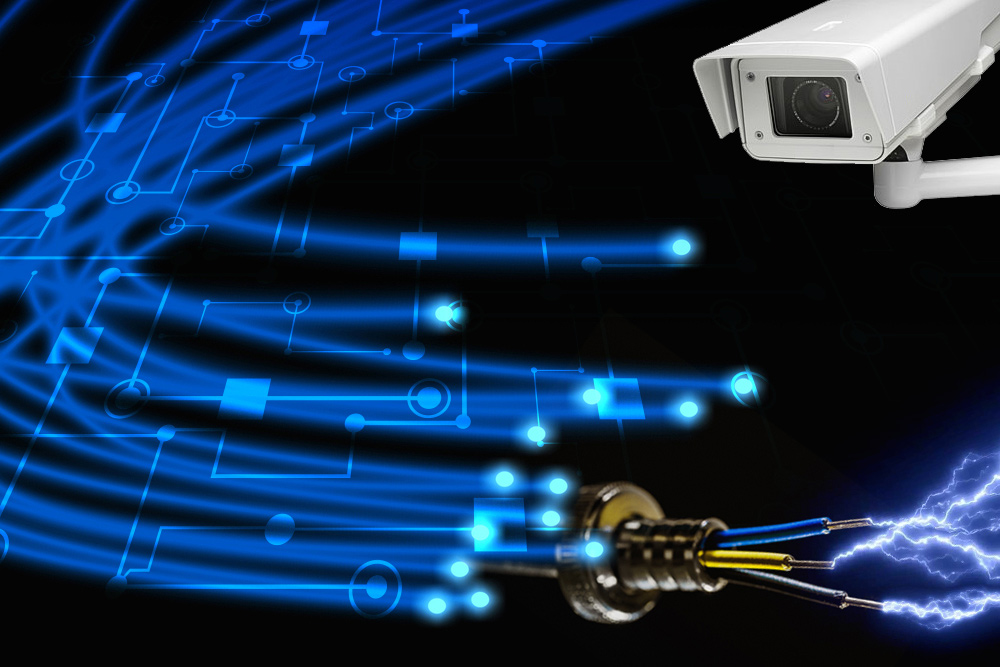How Fiber Security Helps Prevent Intrusions and Improves Monitoring
How Fiber Security Helps Prevent Intrusions and Improves Monitoring
Blog Article
The Ultimate Guide to Fiber Optic Protection Equipments for Your Service
In an age where protection concerns are paramount for companies, understanding the details of fiber optic innovation can be transformative. This guide lays out exactly how integrating fiber optic safety and security systems not just improves data protection yet additionally provides advantages like resistance to disturbance and real-time monitoring capabilities.
Comprehending Fiber Optic Innovation

The core of a fiber optic cord consists of a slim glass or plastic facility, surrounded by a cladding layer that reflects light back into the core. Single-mode fibers are designed for long-distance transmission, while multi-mode fibers are appropriate for much shorter distances, frequently utilized within buildings.
Optical fiber are not only faster but likewise more safe and secure than conventional electrical wiring. Their inherent resistance to electro-magnetic disturbance and the problem of taking advantage of the signal without detection make them a preferred selection for organizations focusing on data stability and safety. As companies increasingly rely upon protected and reliable interaction systems, understanding fiber optic innovation becomes essential for informed decision-making.
Key Benefits of Fiber Optic Safety And Security
When thinking about safety and security alternatives for a service, the benefits of fiber optic systems are particularly compelling. Fiber optic modern technology uses outstanding information transmission rates and data transfer capability, making it excellent for dealing with high-resolution video clip feeds from security video cameras. This capacity ensures that safety and security employees receive real-time information, enhancing general reaction times to prospective security dangers.
Moreover, fiber optic wires are inherently immune to electro-magnetic interference, which can jeopardize the honesty of standard copper-based systems. This resistance makes certain that the information transferred stays safe and secure and continuous, supplying a more dependable protection framework. Furthermore, fiber optics are less susceptible to physical damage, as they are made from glass rather than steel, lowering maintenance expenses and downtime.
An additional substantial advantage is the raised scalability of fiber optic systems. As organization needs progress, fiber networks can be conveniently broadened to accommodate additional safety and security devices without significant overhauls to the existing framework. Lastly, fiber optic systems use enhanced cybersecurity attributes, including encryption capacities that secure sensitive data from unauthorized accessibility. Jointly, these benefits make fiber optic safety systems a robust selection for companies looking for to enhance their security procedures.
Setup Process and Considerations
Taking into consideration the complexities involved, the setup procedure of fiber optic safety and security systems needs cautious planning and implementation. The preliminary step involves a detailed website evaluation to determine optimum places for cabling and equipment. This evaluation ought to think about environmental factors, existing infrastructure, and possible vulnerabilities.

Additionally, the installment has to follow neighborhood building ordinance and market criteria. This might include collaborating with various stakeholders such as building managers, IT groups, and security workers to ensure smooth integration with existing systems.
Post-installation, rigorous screening is essential to confirm system performance and identify any concerns that may develop. By prioritizing these factors to consider during the installation process, companies can guarantee a robust and reliable fiber optic security system that fulfills their specific security needs.
Most Current Advancements in Fiber Optic Safety And Security
Current innovations in fiber optic innovation have significantly boosted the capabilities of safety and security systems for services. One of one of the most noteworthy technologies is the integration of fiber optic sensors that can spot vibrations and breaches along the boundary of a facility. These sensors give real-time surveillance, enabling fast response to possible breaches.
Additionally, the development of distributed fiber optic noticing innovation permits the continuous monitoring of big locations with a solitary fiber cable television. This approach not just decreases installation prices but also go to the website boosts the integrity of keeping track of systems by removing the demand for numerous, different sensors.
In addition, advancements in multiplexing techniques have enabled companies to send substantial quantities of data over fiber optic networks, enhancing the abilities of video clip monitoring systems. High-def video clip feeds can now be sent over cross countries without loss of high quality, making sure that protection view workers have accessibility to clear and workable information.
Finally, making use of artificial knowledge (AI) combined with fiber optic systems is transforming hazard detection. AI formulas can assess information from fiber optic networks to recognize unusual patterns or habits, permitting for positive safety and security actions. These technologies jointly stand for a significant leap forward in fiber optic protection technology.
Selecting the Right System for Your Company
Choosing the suitable fiber optic safety and security system for your service is critical for making sure optimum protection and tranquility of mind. To make an educated selection, analyze your particular safety and security needs, considering variables such as the size of your properties, the nature of your procedures, and prospective vulnerabilities.
Begin by examining the level of protection required; as an example, high-risk atmospheres might require sophisticated systems with integrated surveillance and invasion detection capabilities. Next, consider scalability; as your business grows, your security system ought to be capable of increasing to suit raised needs without significant overhauls.
Additionally, check out the integrity and performance of different systems. Search for carriers with established reputations and consumer reviews that prove to their service top quality. It's also recommended to ask concerning the modern technology's compatibility with existing infrastructure, making certain a smooth assimilation process.
Conclusion
In conclusion, fiber optic safety systems offer a robust solution for improving company safety and security infrastructures. The most recent advancements additionally boost the performance of these systems, making sure that services remain safe and secure and versatile in an ever-evolving danger landscape.
Report this page